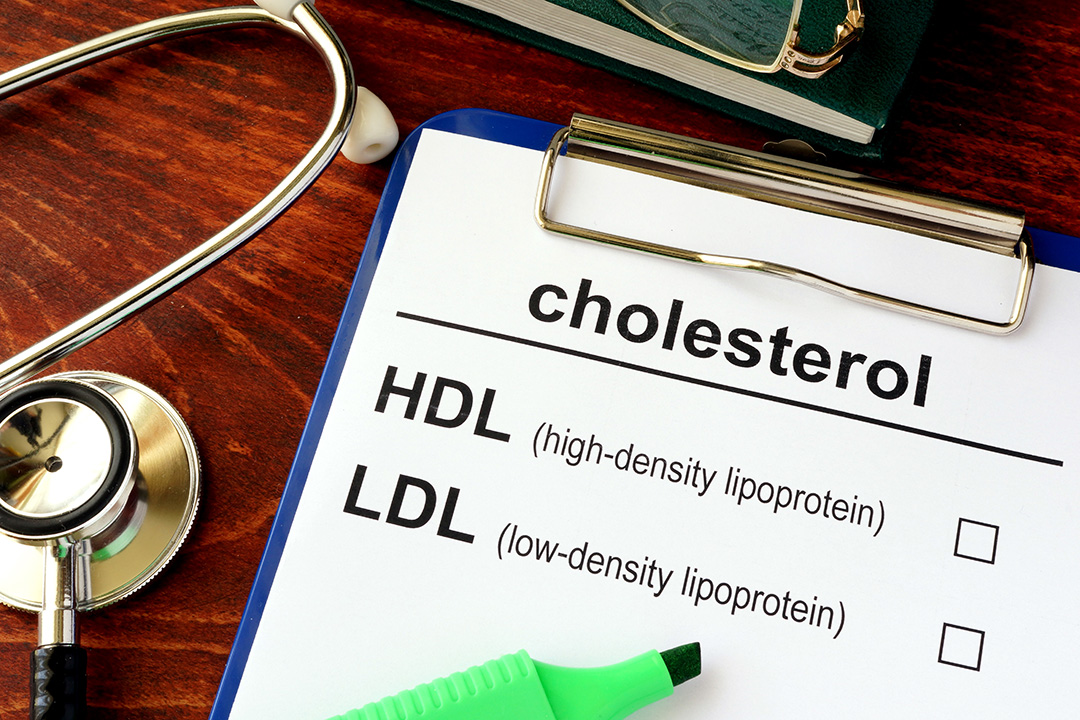
The commonest cause of death and disability around the globe is cardiovascular disease. It is estimated that around 17 million people die on a yearly basis from some form of cardiovascular disease.
The commonest cause of cardiovascular disease is atherosclerosis, which is the progressive build-up of fat, inflammatory tissue and calcification within the walls of an artery. If you think about a doughnut, the artery is very similar. The blood flows through the channel but all the action is happening in the wall. From very early on in life, fat, inflammatory tissue and subsequently calcium build-up in the wall of the arteries without causing a blockage. This process may take decades before the fatty plaque that has formed suddenly ruptures to cause an acute vascular event such as heart attack or stroke.
There is no doubt that LDL cholesterol is central to this process but it is not that simple. For many years, we have been told that LDL is bad and HDL is good. Here is where size is important! Both LDL and HDL can be divided into small and large particles. The large particles are typically good, whereas the small particles are bad.
Simplistically, small LDL puts fat into your arteries where as large LDL is an important component of cellular metabolism, building healthy brain function, is the basic ring for steroid metabolism, bile salt and vitamin D metabolism.
Small HDL is pro-inflammatory & is intimately involved in the atherosclerotic process in the artery wall. Large HDL removes fat from the arteries. Thus, purely considering the basic cholesterol profile does not give the entire story. The sub-fractions of cholesterol can be measured but typically, if you have elevated cholesterol, elevated HDL cholesterol and low triglycerides, you have predominance of large LDL and HDL and therefore a healthy pattern. Whereas if you have an elevated triglyceride and low HDL, this typically reflects small LDL and HDL which is the pattern that promotes the build-up of fat in the walls of your arteries.
Two large recent trials have also questioned the hypothesis that saturated fat promotes heart disease. A large meta-analysis from Cambridge University in the UK involving 650,000 people showed no link between saturated fat and heart disease and this was also suggested by the PURE study which looked at 220,000 people over nine years in 50 different countries showing a 14% reduction in all cause death and cardiovascular disease in people with the highest intake of saturated fat.
Basically, I do not treat an elevated cholesterol, rather I assess cardiac risk. I perform a coronary calcium score which is a CT scan that does not involve injections or dye and assesses the build-up of fat in the walls of the coronary arteries using calcium as a surrogate marker. The more calcium, typically the more fat, putting you at higher risk. A recent presentation at the European Society of Cardiology meeting in 2019 showed clearly that if the coronary calcium score was below 100 over the age of 50 without a prior history of cardiovascular disease then statin therapy to lower cholesterol is of no benefit.
Thus, before you are commenced on statin treatment it is vital you have a full and accurate assessment of your cardiovascular risk. In my practice I typically use a comprehensive risk calculator that also incorporates coronary calcium scoring.